Search results for: 'Stone to'
-
 Polished stone age axe head
Polished stone age axe headThe small tool from the younger Stone Age has a nicely polished surface revealing the beautiful black stone it is made of. Approx. 4200 to 2400 BC.
Price: on request Six neolithic stone tools
Six neolithic stone toolsNice group of artefacts from the Northern European Neolithic. One blade, two dagger fragments and three axe head fragments. All found in Northern Germany.
Price: on request Small axe head from the New Stone Age
Small axe head from the New Stone AgeCompact stone axe from the 3rd Millenium BC. Found on the Danish island of Moen.
Price: on request Stone Age chisel from Northern Germany
Stone Age chisel from Northern GermanyAsymmetrically shaped chisel with two polished sides. Made of light flint. Approx. 3400 to 2400 BC.
Price: on request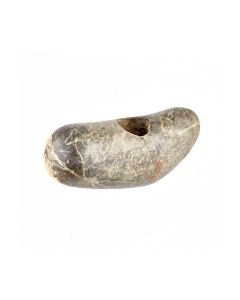 Finely polished hammer axe
Finely polished hammer axeThe compact axe head is made of beautiful and polished green-black stone with white veins. Late Neolithic to Copper Age.
Price: on request Small Stone Age axe made of rock
Small Stone Age axe made of rockThe tool with finely polished blade is of the point-butted type. From the Stone Age of western Europe.
Price: on request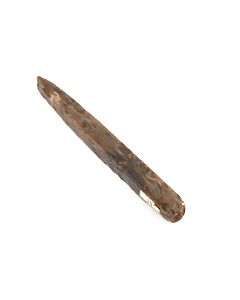 Neolithic chisel from Northern Germany
Neolithic chisel from Northern GermanyElegantly shaped chisel with two polished sides. Made of dark flint. Approx. 3400 to 2400 BC.
Price: on request Neolithic axe head
Neolithic axe headFinely crafted tool made of nice dark grey flint. From the New Stone Age of Europe. A specimen of the thick butted type with thin blade.
Price: on request Neolithic axe head
Neolithic axe headFinely crafted tool from the New Stone Age of Europe. A specimen of the thick butted type.
Price: on request Flint knife from Northern Germany
Flint knife from Northern GermanyFlat two-edged stone blade from the Dagger Period of Northern Europe.
Price: on request Neolithic axe head from Luetzow in Northern Germany
Neolithic axe head from Luetzow in Northern GermanyPolished axe made of beautiful brown flint. It was found more than 100 years ago near the town of Luetzow.
Price: on request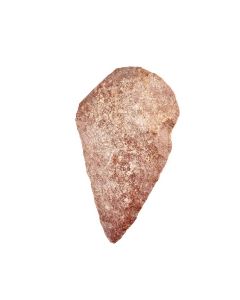 Paleolithic hand axe
Paleolithic hand axeThe universal tool of the older Stone age. It could be used as a borer or a cutter. Approx. 500,000 to 200,000 BC.
Price: on request Neolithic flint dagger from Denmark
Neolithic flint dagger from DenmarkDouble-edged blade and flat shaft made of beautiful flintstone. A status symbol from the transitional period between Late Neolithic and Early Bronze Age.
Price: on request Neolithic axe head
Neolithic axe headFinely crafted tool from the New Stone Age of Europe. A specimen of the thin butted type.
Price: on request Powerful and heavy work axe
Powerful and heavy work axeRare and impressively large and heavy tool from the New Stone Age. The axe type comes from Jutland, Denmark.
Price: on request Large neolithic axe head
Large neolithic axe headA tool from the Early Neolithic of Europe. Nicely polished and impressive by its size and weight.
Price: on request Neolithic axe head with through hole
Neolithic axe head with through holeFinely crafted tool from the New Stone Age of Europe. Made from greenish grey rock. With a through hole at the neck as a remarkable feature.
Price: on request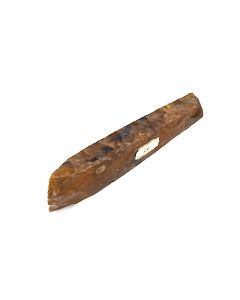 Neolithic axe head from Luetzow in Northern Germany
Neolithic axe head from Luetzow in Northern GermanyNice polished axe from brown flint. It was found more than 100 years ago near the town of Luetzow.
Price: on request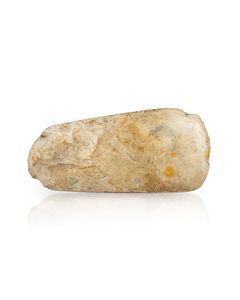 Neolithic axe head
Neolithic axe headA Stone Age tool from Aalborg in Denmark. Nicely polished and impressive workmanship.
Price: on request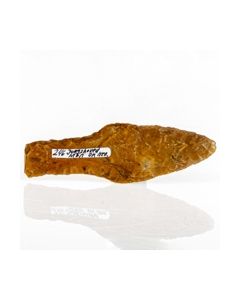 Scandinavian flint dagger
Scandinavian flint daggerNicely worked flint dagger from the transitional period between Late Neolithic and Early Bronze Age. Jungshoved on the Danish Island of Moen was the find spot.
Price: on request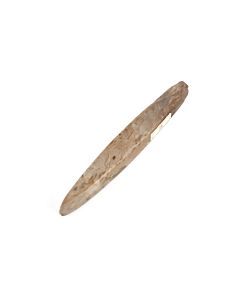 Neolithic chisel from Northern Germany
Neolithic chisel from Northern GermanyElegantly shaped chisel with two polished sides. Made of grey flint. Approx. 3400 to 2400 BC.
Price: on request Neolithic dagger
Neolithic daggerNicely worked flint dagger of type III. Sprove on the Danish Island of Moen was the find spot. 1700 to 1500 BC.
Price: on request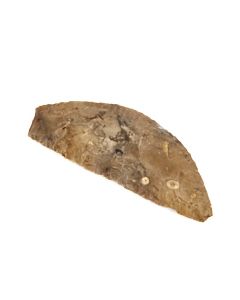 Neolithic sickle from Northern Germany
Neolithic sickle from Northern GermanySmall crescent-shaped blade made of beautiful grey flint. This tool represents an intermediate state within the radical transition from Neolithic to Bronze Age.
Price: on request Neolithic sickle from Northern Germany
Neolithic sickle from Northern GermanyCrescent-shaped blade made of beautiful grey flint. This tool represents an intermediate state within the radical transition from Neolithic to Bronze Age.
Price: on request Neolithic sickle from Northern Germany
Neolithic sickle from Northern GermanySmall crescent-shaped blade made of beautiful polychrome flint. This tool represents an intermediate state within the radical transition from Neolithic to Bronze Age.
Price: on request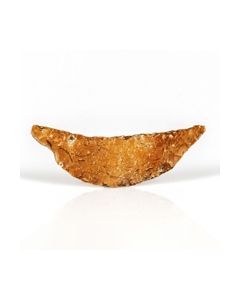 Small Neolithic sickle from Northern Germany
Small Neolithic sickle from Northern GermanyThe crescent-shaped blade is made of reddish brown flint. This tool represents an intermediate state within the radical transition from Neolithic to Bronze Age.
Price: on request Michelsberger culture artefacts from museum stock - found in Camp-a-Cayaux, Belgium
Michelsberger culture artefacts from museum stock - found in Camp-a-Cayaux, BelgiumFunde vom Camp-a-Cayaux, bei neolithischer Flintmine in Spiennes, Belgien. Abschläge und Werkzeuge. 4500 v. Chr. bis 3500 v. Chr.
Price: on request Roman gaming pieces from the Rhineland
Roman gaming pieces from the Rhineland6 Roman glass gaming pieces and 8 other Roman artefacts. Finds from the Roman city of Novaesium, today's Neuss in Germany.
Price: on request Roman potsherds and mosaic fragment from the Rhineland
Roman potsherds and mosaic fragment from the RhinelandFragments of Roman pottery. Finds from the Roman city of Novaesium, today's Neuss in Germany, an early Roman foundation and with this one of the oldest cities in Germany.
Price: on request

